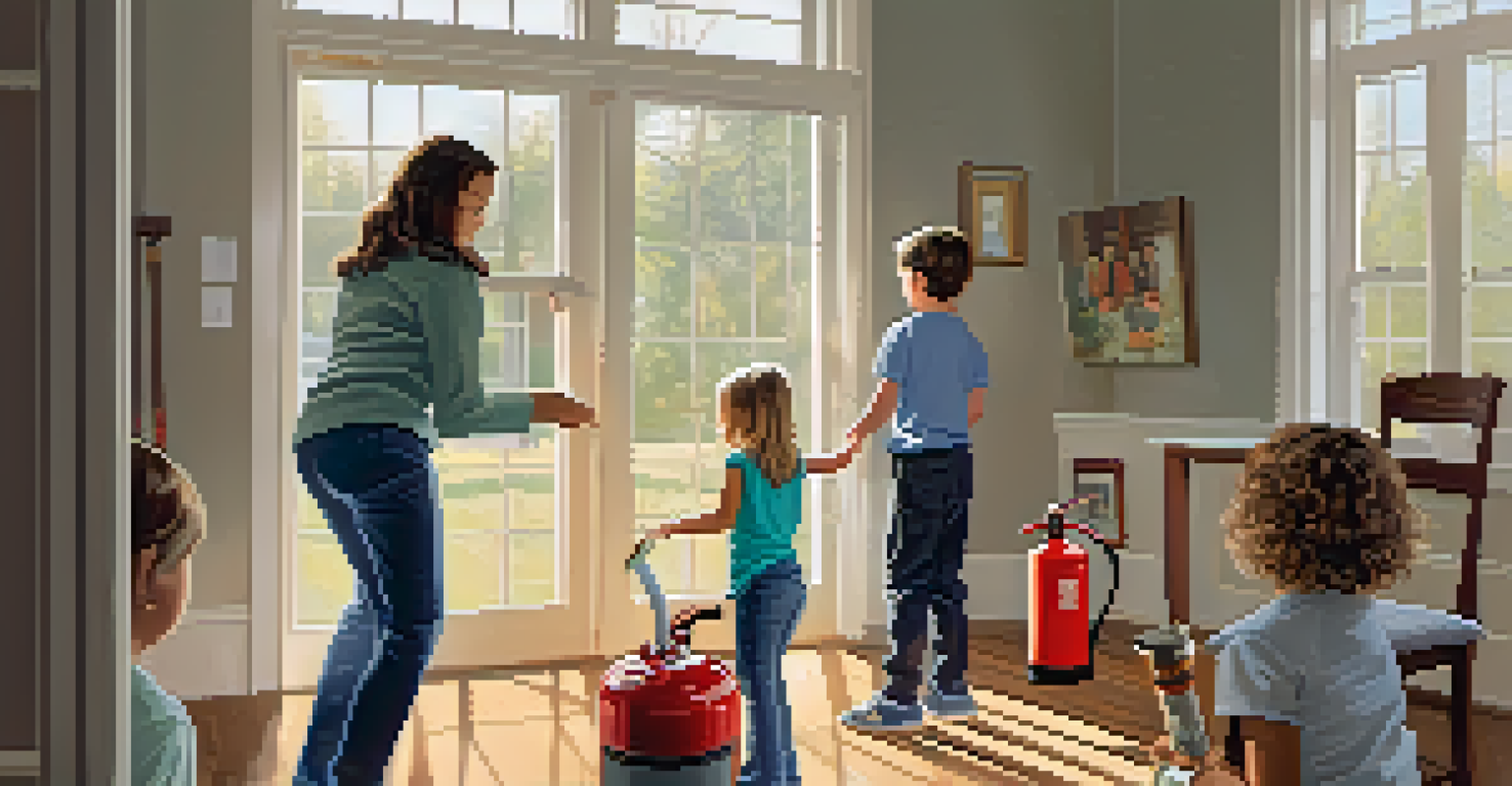How to Conduct a Home Safety Drill for Families

Understanding the Importance of Home Safety Drills
Home safety drills are vital for preparing families for emergencies. They help everyone understand what to do in various situations, reducing panic and confusion. Just like practicing a fire drill at school, these rehearsals can save lives and prevent injuries.
By failing to prepare, you are preparing to fail.
By familiarizing your family with escape routes and safety protocols, you create a sense of security. Knowing there’s a plan in place can ease anxiety and make emergencies less daunting. Think of it as a rehearsal for an unexpected performance; preparation makes all the difference.
Moreover, these drills can reveal potential hazards within your home. By assessing your space during practice, you can identify areas that may need improvements or adjustments. This proactive approach not only enhances safety but also builds confidence in your family's ability to respond effectively.
Choosing the Right Time for Your Drill
Timing can significantly influence the effectiveness of your safety drill. It’s best to choose a time when everyone is home and can participate without distractions. Consider weekends or evenings when family members are more likely to be available and engaged.

Additionally, think about simulating real-life scenarios by conducting drills during different times of the day. For example, practicing a fire drill in the evening might help children understand the importance of being alert during bedtime. This variation helps everyone adapt to different circumstances.
Home Drills Boost Family Preparedness
Conducting safety drills helps families understand emergency procedures, reducing panic and enhancing confidence.
Remember to communicate the drill's purpose to your family beforehand. This way, they won't be caught off guard and can approach the exercise with the seriousness it deserves. Clear communication helps set the tone and ensures everyone understands their roles.
Involving Everyone in the Process
Engaging every family member in the planning and execution of the drill is crucial. This inclusion fosters teamwork and ensures everyone knows their responsibilities. When everyone has a role to play, it enhances the drill's effectiveness and promotes a sense of unity.
The time to repair the roof is when the sun is shining.
Consider assigning specific tasks based on age and abilities. For instance, younger children can practice finding a safe spot, while older kids can learn how to call emergency services. Tailoring responsibilities helps everyone feel important and involved in the safety process.
After the drill, gather as a family to discuss what went well and what could be improved. This reflection not only reinforces learning but also encourages open dialogue about safety concerns. It’s a great opportunity to make adjustments and strengthen your family’s preparedness.
Creating a Family Emergency Plan
A well-crafted family emergency plan is the backbone of any safety drill. This plan should detail escape routes, safe meeting points, and emergency contacts. Think of it as your family's roadmap during a crisis; everyone needs to know where to go and what to do.
Involve your family in creating this plan, as it encourages buy-in and understanding. Use clear, simple language and visual aids, like maps, to illustrate routes and procedures. Making the plan accessible and easy to understand is essential for all ages.
Engagement Strengthens Safety Efforts
Involving all family members in planning and executing drills fosters teamwork and ensures everyone knows their roles.
Once your plan is established, practice it regularly. Repetition helps solidify knowledge and ensures that everyone remembers their roles during an actual emergency. Like any good plan, it evolves, so revisit and update it as your family’s needs change.
Practicing Various Emergency Scenarios
To prepare for the unexpected, practice different emergency scenarios beyond just fire drills. Consider simulating situations like earthquakes, floods, or home invasions. Each scenario requires a unique response, and practicing them helps everyone think on their feet.
Encourage your family to brainstorm potential emergencies that could occur in your area. This discussion not only raises awareness but also allows everyone to contribute ideas on how to respond. It’s a collaborative effort that strengthens family bonds while enhancing safety.
After practicing various scenarios, have a debriefing session. Discuss what was learned, what felt challenging, and how to improve. This reflection is crucial for reinforcing lessons and ensuring that everyone feels prepared for real-life situations.
Utilizing Safety Tools and Resources
Incorporating safety tools into your drills can enhance preparedness. Items like fire extinguishers, first aid kits, and emergency contact lists should be readily accessible. Familiarizing family members with these tools during drills can make a significant difference during an actual emergency.
Consider using apps or resources that provide guidance on emergency preparedness. Many organizations offer checklists and tips that can help families stay organized. Technology can be a powerful ally in ensuring that everyone knows how to respond quickly and effectively.
Make Safety Drills a Family Tradition
Transforming drills into enjoyable family events encourages a culture of safety and prepares everyone for emergencies.
Don't forget to include pets in your safety planning. Ensure your family knows how to evacuate and care for pets during emergencies. Just as with human family members, practicing pet safety can prevent chaos and keep everyone safe.
Reviewing and Improving Your Safety Drills
Regularly reviewing and improving your safety drills is essential for ongoing effectiveness. Schedule periodic evaluations to assess how well your family remembers the plan and can execute it. This ongoing commitment ensures that safety remains a priority in your household.
Encourage feedback from family members after each drill. Their insights can help identify areas for improvement or highlight any confusion about processes. Listening to everyone’s thoughts fosters an open environment and strengthens your family’s preparedness.

As your family dynamics change, so should your safety drills. Be proactive in adjusting your plans to accommodate new members, changing schedules, or new living situations. This adaptability ensures your family remains ready for any emergency.
Making Safety Drills a Family Tradition
Transforming safety drills into a family tradition can make them more enjoyable and less daunting. Consider scheduling them as fun events, akin to family game nights. This approach can help instill a sense of responsibility while keeping the atmosphere light.
Celebrate after each drill with a small treat or family activity. This positive reinforcement can help everyone associate safety drills with good experiences. The goal is to create lasting memories while emphasizing the importance of being prepared.
Over time, these traditions can help build a culture of safety within your family. When safety becomes a shared value, everyone is more likely to prioritize it in their daily lives. A proactive family is a prepared family, and that’s a legacy worth building.